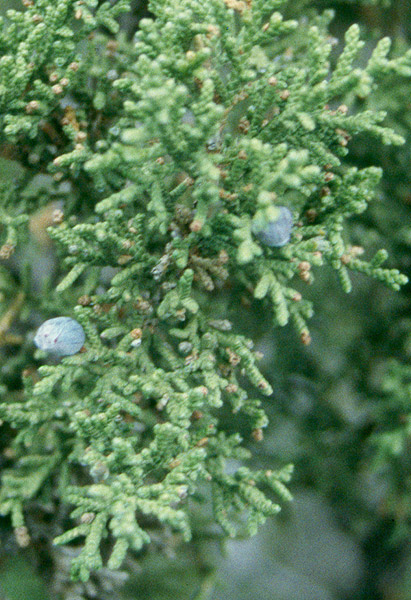Utah Juniper
Juniperus osteosperma
Family: Cupressaceae or Cypress
Leaves: Small scale-shaped leaves that clasp and cover young twigs similar to other junipers; yellow-green; evergreen.
Twigs/buds: Young, foliage covered twigs coarser and stiffer than with Rocky Mountain juniper; twigs are densely clumped at branch ends.
Flowers/fruit: Usually monoecious. Berry-like fruit takes two years to mature; nearly round; 1/4" to 3/4" in diameter; red-brown; often covered with a white, waxy coating; usually contains 1 seed.
Bark: Gray; fibrous and scaly.
Wood: Little used except for fence posts and firewood; properties and potential uses likely similar to Rocky Mountain juniper. Heartwood yellow-brown, very durable; sapwood white.
General: Native to the west-central Rockies and Great Basin at middle elevations, including most of Utah. Very drought, cold, and heat resistant and tolerant of a wide variety of soil conditions; does well on dry, rocky sites. Often shrubby but sometimes more upright; generally smaller (15' tall) than the biggest Rocky Mountain junipers. Shade intolerant.
Landscape Use: Little used in landscapes except where people build homes among existing trees. Could be used more in xeriscapes, but not easy to obtain from nurseries. Interesting texture. Zones 3-7.




